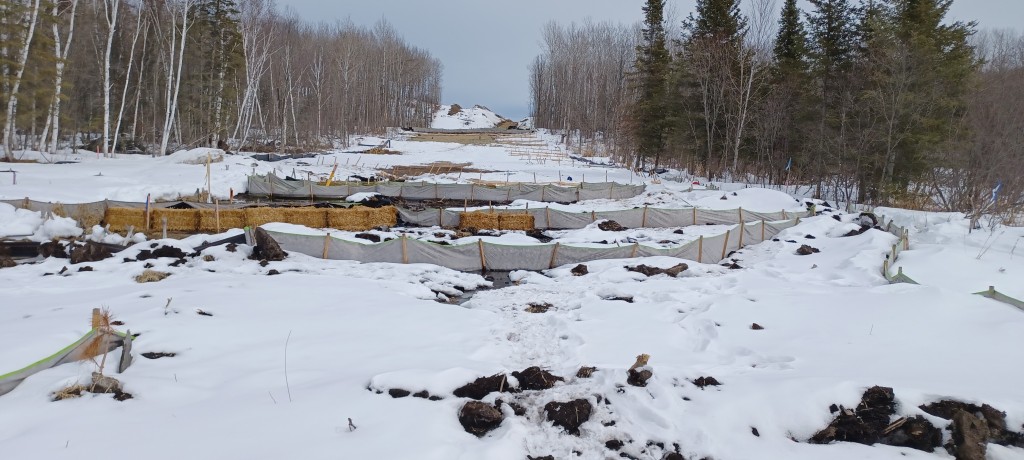The environmental damage from building the Enbridge Line 3 pipeline appears to be much greater than what is publicly known.
In response to a Data Practice Act, Healing Minnesota Stories obtained a copy of a “Dewatering Permit” the Minnesota Department of Resources (DNR) issued Enbridge last Fall, more than ten months after construction was deemed complete and the pipeline operational.
The permit runs from Aug 12, 2022 to Dec. 31, 2023, or more than 16 months. That’s more time than it took Enbridge (10 months) to build Line 3 in the first place.
The permit allows Enbridge to dewater up to one billion gallons per year. That’s double Enbridge’s initial 511 million gallon dewatering request to build the entire pipeline.

Line 3 passes through 78 miles of wetlands, as well as other areas with high water tables. It presents significant challenges to build and repair pipelines. As soon as workers start digging a trench, it fills with water.
The latest dewatering permit allows Enbridge to pump water out of the trench and the ground underneath it at a rate up to 800 gallons per minute to create a dry area to work. The water is filtered and discharged away from the trench.
Enbridge’s new dewatering permit identifies 23 areas along the pipeline’s 337-mile route where Enbridge is apparently doing additional repair work. Three areas account for most of the dewatering requests:
- A 42-mile stretch in Hubbard, Cass, and Wadena counties, from roughly where Line 3 crosses Hay Creek to the Backus pump station. Estimated dewatering: 276 million gallons.
- A 34-mile stretch in St. Louis and Carlton counties, from the North Gowan pump station to the Minnesota/Wisconsin border. Estimated dewatering: 260 million gallons.
- A 36-mile stretch in Clearwater County from the Clearbrook pump station to Hubbard County line. Estimated dewatering: 141 million gallons.
This is on top of the three aquifer breaches we already know occurred during Line 3 construction.
The Line 3 dewatering permit has been controversial from the start. Less than three months after construction started, Enbridge sought to increase its dewatering permit from 510 million gallons to five billion gallons, a nearly ten-fold increase. The DNR approved it without public notice.
Further, Line 3 construction occurred during a drought. The White Earth Band of Chippewa and the Minnesota Chippewa Tribe voiced concerns on the impact such massive dewatering would have on wild rice.
Additional questions have been submitted to the DNR, such as whether there are ongoing investigations into permit violations.
The DNR staff person most knowledgeable about Line 3 work is out and won’t be back until next week. I will post an update when available.
Also, tip of the hat to to Waadookawaad Amikwag (Those Who Help Beaver) volunteers who continue to monitor the Enbridge Line 3 corridor to identify environmental damage and keep the issue in the public spotlight.

